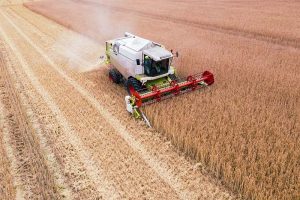Where’s My Broccoli Subsidy?
Author: Ron Hunninghake. MD
 Rarely an issue of Health Hunters goes by without an article praising the profound health benefits of vegetables and fruits. Broccoli is just one of many plant-based foods loaded with phytonutrients that are exquisitely beneficial to our health and well-being.
Rarely an issue of Health Hunters goes by without an article praising the profound health benefits of vegetables and fruits. Broccoli is just one of many plant-based foods loaded with phytonutrients that are exquisitely beneficial to our health and well-being.
Contrast that with our discussions of corn, soy, and wheat. Grown as GMO crops, these otherwise whole foods typically get refined down to low fiber processed foods and are ultimately sold (with high quantities of sugar added) in the form of breakfast cereals, snack bars, white bread, cookies, and many other unwholesome treats. Well, you know the rest of this SAD story: the Standard American Diet is clearly linked to diabetes, obesity, cancer, leaky gut, autoimmune disease, and increased susceptibility to infection.
Granted, vegetables and fruits can be sprayed and mistreated in many ways as well, but despite these issues, their highly colorful phytonutrients contribute significantly to maintenance of good health.
So why in the world are these healthy foods NOT subsidized by the US government?! Corn, soy, and wheat have been subsidized to the tune of $134 billion over the last decade. With the precipitous rise in health care spending, wouldn’t you think Congress would shift more government support to these healthy “specialty” foods?
After some careful internet searching, I did find out that the 2014 iteration of the farm bill did allow a total expenditure of $4 billion for specialty crops, in various ways: school lunches, nutrition assistance programs, export enhancements, and select grants. Ironically, most of the specialty vegetable and fruit growers wouldn’t have it any other way. Why?!
In simple terms, once you accept government money, you also sign up for more government oversight and potential interference. Also,because of its incredible variety, specialty crop farming doesn’t lend itself to evenhanded regulation. These farmers prefer independence and flexibility over government-regulated conformity.1
Notably, commodity farmers (primarily corn, soy, and wheat) can now plant up to 15% of their acreage to vegetables and fruits – something new added to the farm bill and not allowed in the past. With the growing interest in “farm-to-table” produce, these farmers could have greater local-market availability.
Still, however, America is left with an antiquated system that requires all taxpayers to spend billions to underwrite grain-based, highly refined, overly sprayed commodity foods that make 78% of us “sick, fat, diabetic, and depressed.” Don’t forget that dreaded statistic: 1 out of 2 of us will get cancer in our lifetime.
…unless you “subsidize” your own health with broccoli!
Farm bill: Why don’t taxpayers subsidize the foods that are better for us? – The Washington Post
https://www.washingtonpost.com/lifestyle/food/farm-bill-why-dont-taxpayers-subsidize-the-foods-that-are-better-for-us/2014/02/14/d7642a3c-9434-11e3-84e1-27626c5ef5fb_story.html





